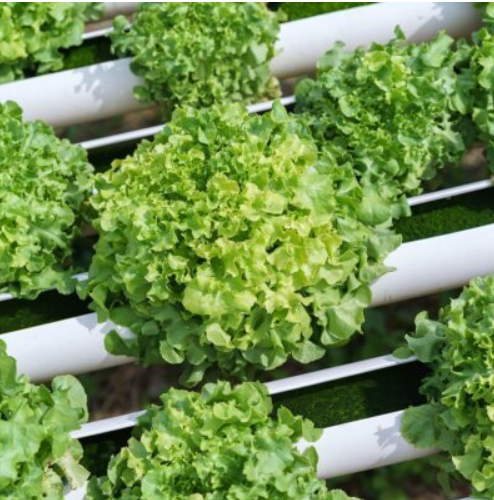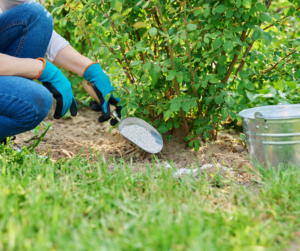Hydroponic Gardening for Beginners: What You Need to Know

When it comes to growing media, there are only three main options to choose from: soil, soilless, and hydroponic. Each comes with its own pros and cons. If you want to grow bigger and better with that major “wow!” factor, a hydroponic system is the way to go. Hydroponic gardening is a way to grow plants in a soilless setting. Are you ready to start your journey of hydroponic gardening? Here’s what you need to know.
What You Need to Know About Hydroponic Gardening
Pros
- Faster growth and bigger yields. Plants grown hydroponically are set up for greater success because the roots have direct access to nutrients, water, and oxygen. Hydroponic gardeners find their plants grow faster with bigger yields.
- Save on water. If this sounds counter-intuitive, it’s not! Once you start your hydroponic system, you won’t need to water your plants on a regular basis because they will already have all of the water available they need. In fact, it is estimated that you will save about 90% of your water if you switch to hydroponic growing from soil growing.
- Weed-free. As many gardeners can agree, pulling weeds is one of the peskiest and time-consuming tasks of garden growing. When you grow hydroponically, there are no weeds to pull.
- Less risk of pests and disease. Soil exposes your plants to soil-borne diseases and pests. Because you’re not using soil when you grow in water, your plants have a lower risk of pest and disease exposure.
- It’s fun and unique! Even those without a green thumb can dabble in the art of growing in soil. But, when you delve into the world of hydroponic gardening, you have the opportunity to experience the joy of growing in a whole new way.
Cons
- It’s more challenging. Growing hydroponically isn’t for the casual grower. This is much more difficult than growing using a soil or soilless mix. Expect to spend significant time researching and setting up your system. Plus, factor in the time it will take to empty your tank and clean the system periodically.
- It’s more expensive. Compared to traditional growing using soil or soilless mix, your hydroponic garden system is more expensive to acquire and build.
- Risk of power outage. Because hydroponic growing relies on electricity, if you experience a power outage, your plants are at risk. Some growers choose to have a backup power method, like a generator, just in case a severe outage occurs.
- Not everything is suitable for hydroponic gardening. There are many plants that thrive in hydroponic settings like cannabis, microgreens, and tomatoes. But, not all of your favorites can be grown using this system, so you might end up having multiple growing methods anyway.
How to Start Your Hydroponic Garden at Home
What You’ll Need
- A hydroponic system (deep water culture, ebb and flow, wicking, drip, aeroponic, or nutrient film technique)
- Water reservoir
- Fresh water
- Oxygen (often provided through an air pump, air line, and air stone)
- Root support (perlite, vermiculite peat moss, coconut fiber, and/or rockwool)
- Nutrients
- Light
Set Up
Each type of hydroponic system has its own setup requirements and best practices. This guide is for a deep water culture hydroponic system because it is the easiest hydro system to use, requiring the least amount of experience and materials of all the system options.
Step 1: Fill your water reservoir with a mixture of your fresh water, root supports, and nutrients. This ratio will depend on the size of your container, which root support you choose, and the nutrients your plant will need.
Step 2: Set up your oxygen system. The most common method is an air pump with an air line that provides roots with consistent oxygen through bubbles. This may be connected to an air stone that keeps the air line at the bottom of your container.
Step 3: Submerge your plant roots or seedlings in the water using a net cap that keeps the plants suspended at the right height.
Step 4: Set up your light. Most plants will require at least six hours of sunlight per day. If you aren’t growing by sufficient natural light, like by a window, you will need to use artificial lighting.
Tips
- If this is your first time growing hydroponically, it is easier to start with live plants rather than grow from seed. When you do this, be sure to wash your plants of soil before submerging in your hydroponic system to prevent contamination.
- Consistently check the pH level of your water, as you might need to make adjustments as you grow. Most plants grow best when the pH level is between 5.5-6.3. For comparison, most tap water is around 7.0-8.0 pH.
- Remember that you might need to make adjustments as your plants grow. Fortunately, it’s much easier to amend any issues when you use a hydroponic system over a soil or soilless mix.
Set Up Your System with Hydroponic Perlite.
We know growers can have great success growing hydroponically and using soil media mixes, so we developed our Hydroponic Perlite to support both growing methods. Our Hydroponic Perlite is a medium-grade, 100% sterile horticulture perlite that is OMRI listed. Get ready to grow further with these amazing benefits:
- Allows for greater air availability
- Provides superior water drainage
- Holds nutrient-enriched water and distributes evenly
- Regulates pH fluctuations
- Increases yields and potency
Shop now for FREE SHIPPING on all orders of $40 or more. Try it today and grow further with Harvest Hero.



